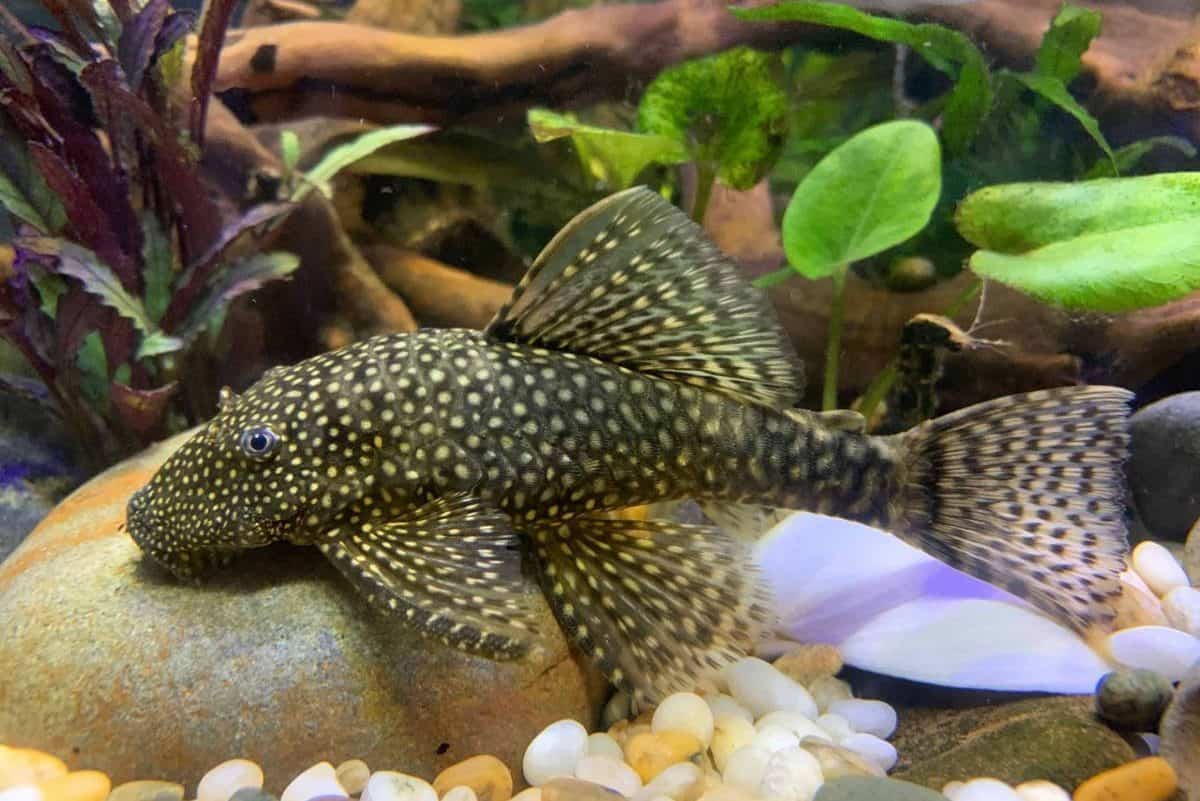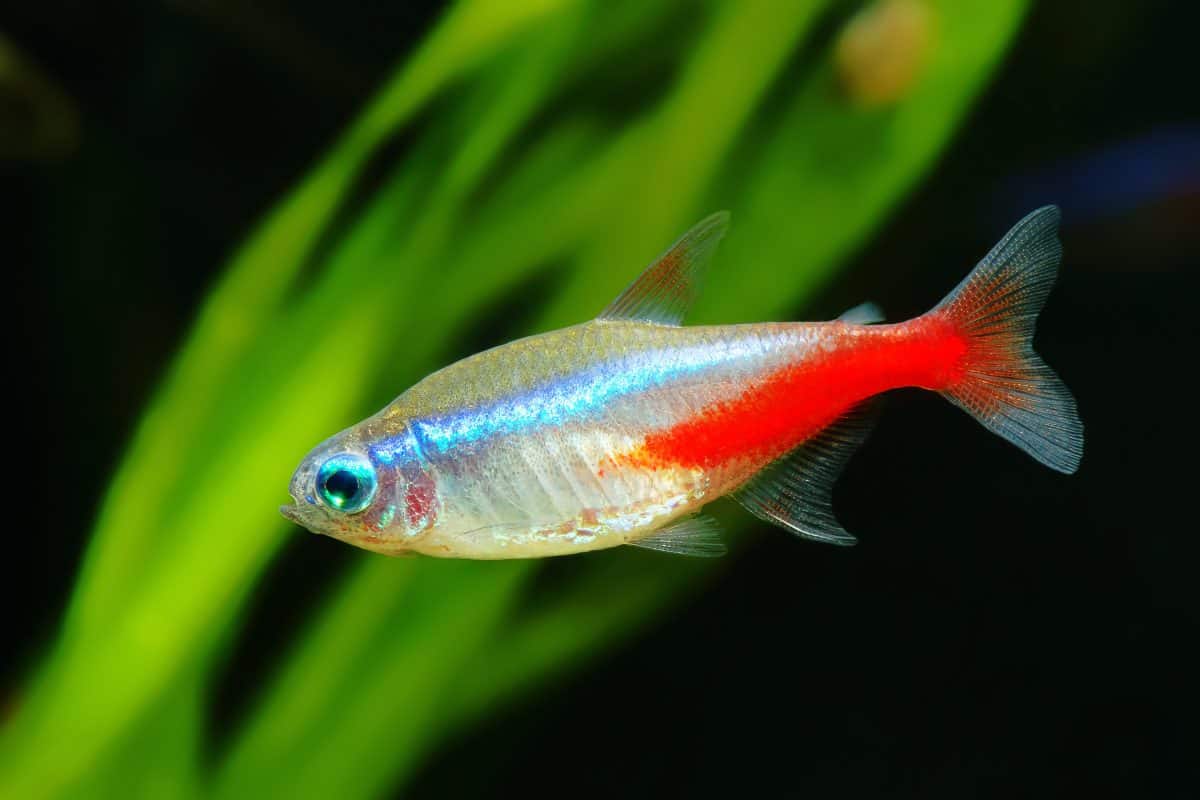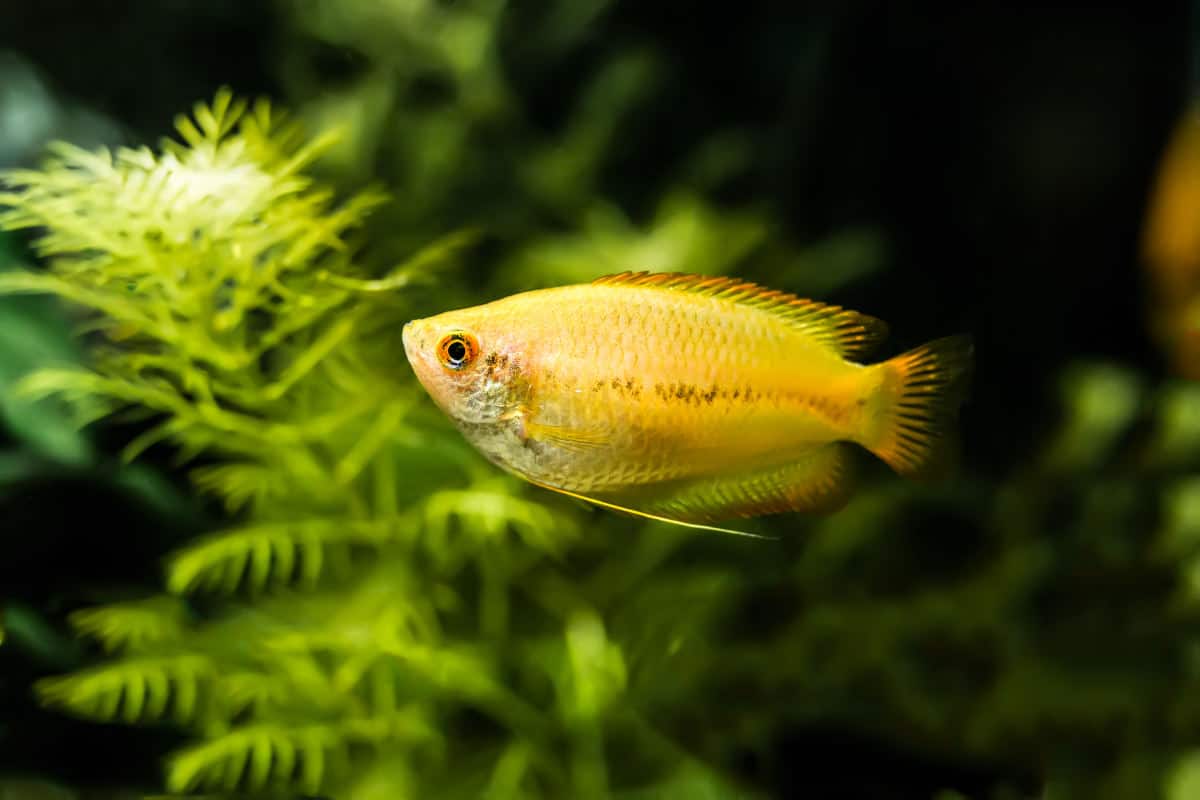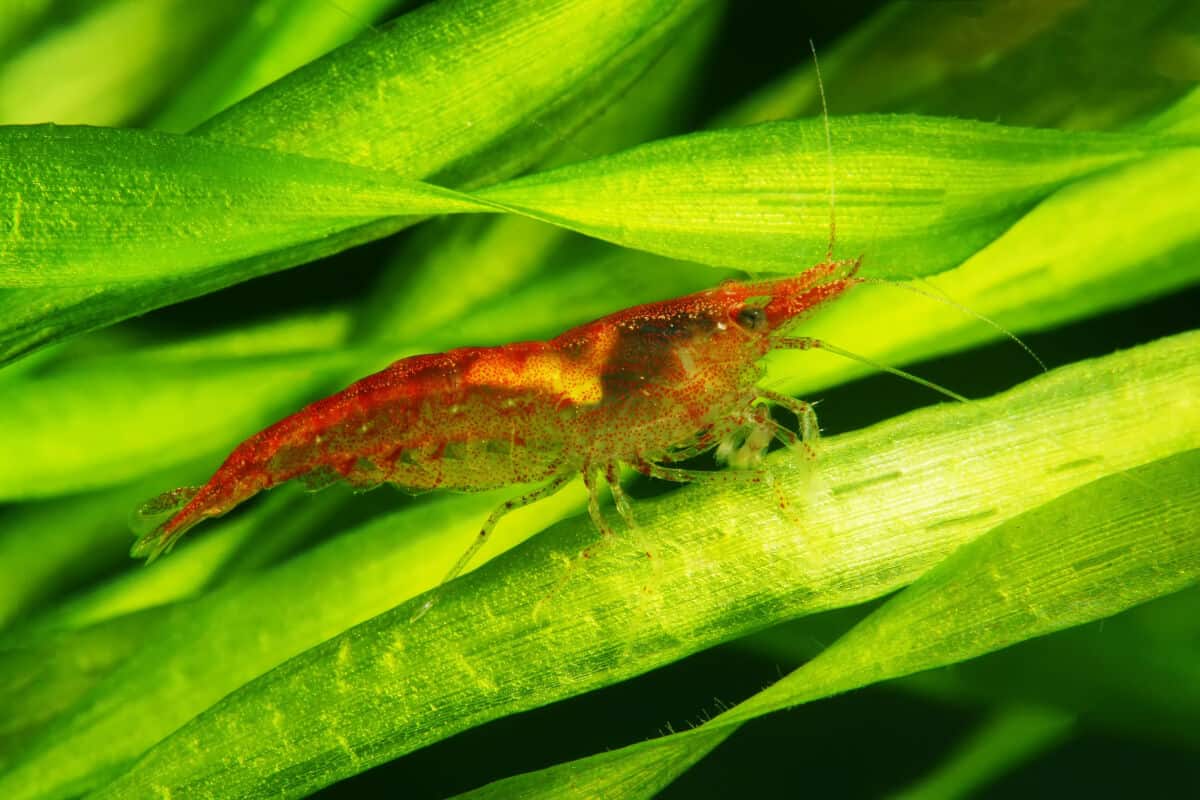The plecostomus, or common pleco, is a robust member of the catfish family. It loves to eat algae and can be an excellent housekeeper in your aquarium. The only setback is it’s a big fish and you will need a large tank to keep it as an adult.
While they might not be visible much during the day, when the lights go out they get to work.
They will eat algae from the bottom and sides of the tank, using their sucker-like mouths. They have even been known to clean algae from flat-shaped fish, so don’t keep them with angelfish or discus.
Growing to sizes in excess of a foot long, they can live for more than ten years. With this in mind, consider the commitment you’re making to caring for this fish, and the size of the tank you will need.
These are some of the reasons that many inexperienced fish keepers will steer clear of keeping a pleco. The juveniles are easy to look after, but, they grow, and they grow very quickly.
In this article, we will give you an overview of the basics in respect of plecostomus care.
We will look at where they come from, their characteristics, tank setup, tankmate compatibility, and breeding possibilities.
All this will help you decide whether you have what it takes to add this fish to your home aquarium collection.
At a Glance Overview
Let’s start by giving you a quick overview of this peaceful fish. Research is important when you are considering an addition to your aquarium and this is a good place to begin.
| Characteristic | Details |
|---|---|
| Common name(s): | Pleco, common pleco, suckermouth catfish, armor-plated catfish, algae eater, and suckerfish. |
| Scientific Name(s): | Hypostomus plecostomus |
| Family: | Loricariidae |
| Origin: | Central and South America, ponds and fresh, brackish waters of river mouths on Atlantic and Pacific Ocean slopes. |
| Care Level: | Easy to moderate |
| Temperament: | Usually peaceful, however, can become aggressive with other members of the same species. |
| Adult Size: | Up to 1 foot 6 inches |
| Color Form: | Light brown base with many dark striped and spotted blotches. |
| Lifespan: | 10 to 15 years |
| Minimum Tank Size: | Minimum 50 gallons as a juvenile, up to hundreds of gallons as a fully grown adult. |
| Typical Tank Setup: | Rocks, driftwood/bogwood, caves, and sturdy plants that are well rooted. |
| Tank Level: | On the bottom and on the sides of the glass |
| Diet: | Herbivore |
| Water Conditions: | Tropical freshwater, 73°F to 82°F, 6.5 to 7.5 pH, 5 to 19 dH |
| Tank mates / Compatibility: | Can be housed with many other fish but might become aggressive with members of its own species. |
The pleco is native to freshwater ponds and the brackish water of river mouths in the northern regions of South America. In an aquarium setting, they are suitable for a freshwater tank.
There are many different species of pleco, in fact over 150. Many of these are not suitable for life in an aquarium. We will be concentrating on the common pleco in this article.
What Does a Common Pleco Look Like?
They have a long body which is wider and flatter, with the head tapering down to the tail. It is sometimes called an “armor-plated catfish” due to the bony plates which cover the upper part of the body. It doesn’t have these scales on the belly or below the head.
The dorsal fin is similar to a sailfin, and all the other fins are well developed. The dorsal fin has seven soft rays and one coarse one. The anal fin has between three and five soft rays and one coarse ray.
The mouth is set slightly under the head and has lips which act as a suction cup. This lets them stick to smooth surfaces and feed off the algae that might be there.
It has small eyes located high on the head and sometimes roll into the sockets. As a part of its unusual omega iris, there is also a membrane covering the eye. This allows the plecostomus to regulate the amount of light exposure received.
Their coloring and patterns can vary, but they are generally light brown with many dark blotches, stripes, and spots.

In their natural habitat, they can grow up to 2 feet long. In an aquarium setting, they usually grow up to between 12 and 15 inches.
Differentiating between the sexes of a plecostomus is difficult, even for a trained eye. A mature male has large pectoral fins which can appear reddish pink in color. Adult females are wider in the mid-section when you look at them from above.
What is their Natural Behavior?
The pleco is a peaceful fish, but it doesn’t tend to get along with its own kind. It can be quite territorial.
It will generally hide during the day and come out at night to feed. It scavenges along the bottom, off the glass walls and from any plants in the tank.
Some do adapt to aquarium life and might be seen more during daylight hours, especially when you are feeding other fish.
Smaller tankmates are generally safe in the presence of a pleco. They don’t usually try to eat them.
Another important thing to bear in mind when keeping a pleco is they can jump. You need to make sure your aquarium has a lid and that it’s well secured.
In their natural habitat, they might wiggle from puddle to puddle during dry periods, looking for a safe haven. They can absorb some oxygen through their stomach, so may last longer than some fish on land. You might find your pleco will swim to the top of the tank and gulp air.
What are their Tank Requirements?
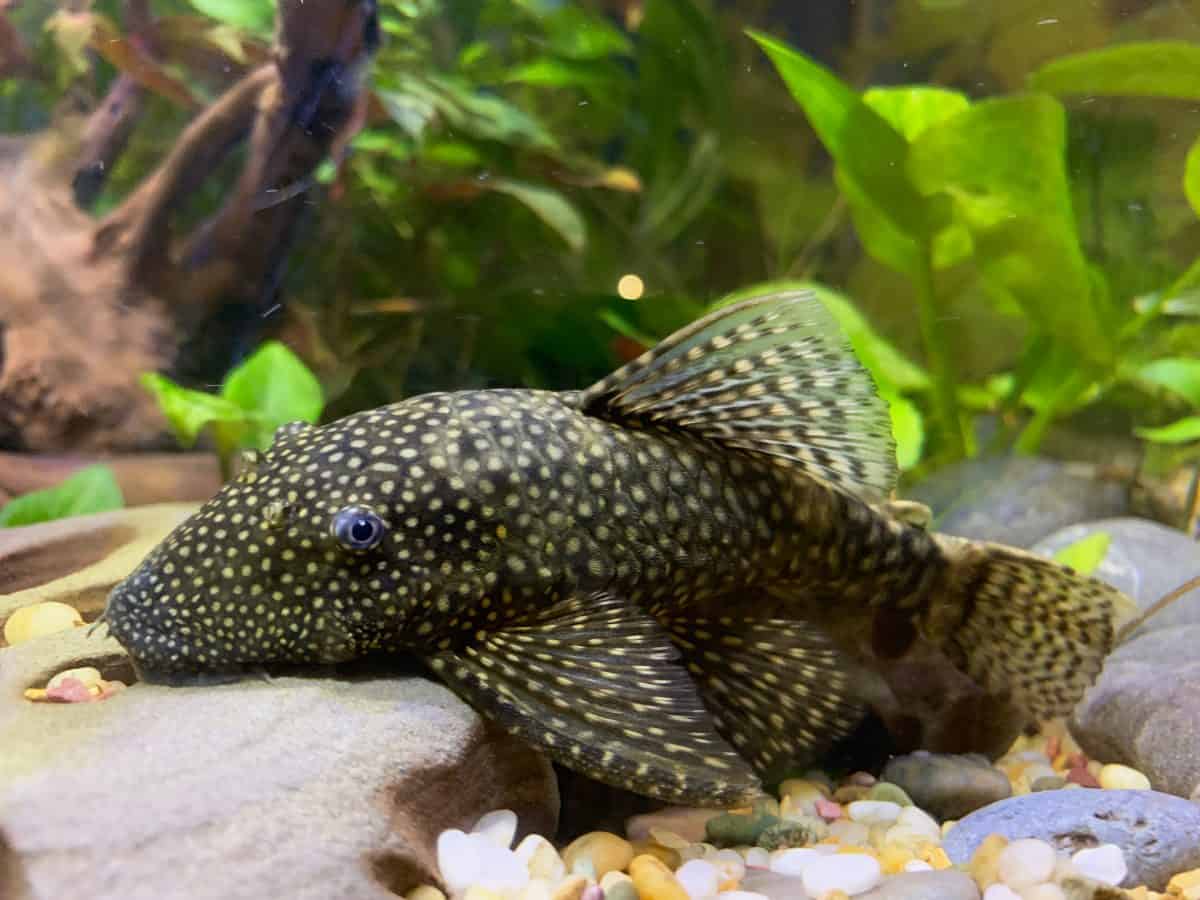
In the wild, the plecostomus can live in a number of habitats. You will find them in fast moving streams or rivers which have rocky substrates. They also survive in brackish water at river estuaries.
This environment tends to be littered with plants and driftwood. It gives them a variety of places to seek refuge during the day and supplies plentiful algae for food.
What Tank Size Does the Common Pleco Need?
A tank containing at least 50 gallons of water is recommended when housing a pleco. When they are very small, you could keep them in a smaller aquarium but they will soon outgrow it. A fully grown specimen will need a tank of 120 gallons or more.
What are their Water Requirements?
The water temperature should be kept at between 73 to 82 degrees Fahrenheit and the pH between 6.5 and 7.5 for the best plecostomus care. Water hardness can be quite varied for these fish, it can be anywhere between 5 and 19 dH.
About 30 percent of the water should be changed on a monthly basis, to keep the tank clean. If the water becomes fouled, it might need to be replaced more often.
What Substrate is Suitable?
They are ardent cleaners and will suck algae from the substrate and sides of the tank. They are mainly nocturnal and like to hide during the day.
The substrate can be gravel, or nothing at all. They will clean the algae from the bottom of a bare tank or scavenge through gravel.
What Filters Should Be Used?
In their natural habitat, they use their suckered mouth to hold onto rocks when water is fast moving. They are used to currents, so select a good canister filter for your aquarium that can keep water parameetrs stable, and provide some current to the tank for your pleco.
Lighting Requirements
Normal to moderate lighting is fine for the common pleco. However, bear in mind that this is a nocturnal fish and will come out to feed when the sun goes down. Having your aquarium lights on permanently can keep it in hiding.
It’s a good idea to set a timer on your lights, so they have a routine. Replicating a sunset and sunrise will encourage the pleco to leave its refuge and clean the algae from your tank.
What Decorations and Plants Can You Use?
Decorations include smooth rocks, driftwood, and caves. Not only will these be a food source, but they will also give the fish somewhere to get away from other inhabitants during the day.
The tank should also have plenty of plants, but make sure they are hardy. Delicate plants can easily be harmed when the pleco grazes on any algae growing on them.
How Many Plecostomus Can You Keep Per Gallon of Water?
We have already indicated that when fully grown, they need a big tank with at least 120 gallons or more of water. The rule of thumb is ten gallons of water per inch of fish.
The larger the tank, the more fish you can keep. To house more than one large pleco you ideally need one that’s about 6 feet long. The minimum size of 50 gallons will only house a pleco until it’s approximately 5 inches long.
What do Plecos Like to Eat?
This herbivorous fish will be seen at night scavenging around the bottom and sides of your aquarium.
What do They Eat in the Wild?
Their natural habitat is a freshwater ecosystem. They will suck algae that grow on aquatic plants, wood, and rocks. This gives them the balanced diet they need from the fiber in the wood and the nutrition in the algae.
While essentially herbivores, they might sometimes inadvertently eat scraps of meat from dead animals.
What Should You Feed Them in Your Aquarium?
On the whole, your pleco will feast on algae which grow in the aquarium. They will hoover it from the substrate, off rocks and driftwood, as well as the tank glass. This can be supplemented with algae wafers, sinking pellets and green food.
They will also gnaw on driftwood, so ensure they have plenty to choose from. This will maintain a good supply of algae and provide fiber.
If you notice your pleco grazing on plants in the tank it might be an indication that they aren’t getting enough food.
Are There Human Foods They Can Eat?
There are some vegetables and fruit which can be fed to plecos. These include lettuce, peas, spinach, and tomatoes. Other vegetables, such as squash and zucchini are also suitable.
Although these vegetables can be fed to the fish raw or blanched, make sure they have no oils or seasonings on them. Don’t be tempted to feed them leftover vegetables that have been on your dinner plate.
How Often Should You Feed Them?
They should be fed daily. Try and feed them just before the lights go out, so other tank inhabitants will be discouraged from stealing their food.
Special Care Requirements
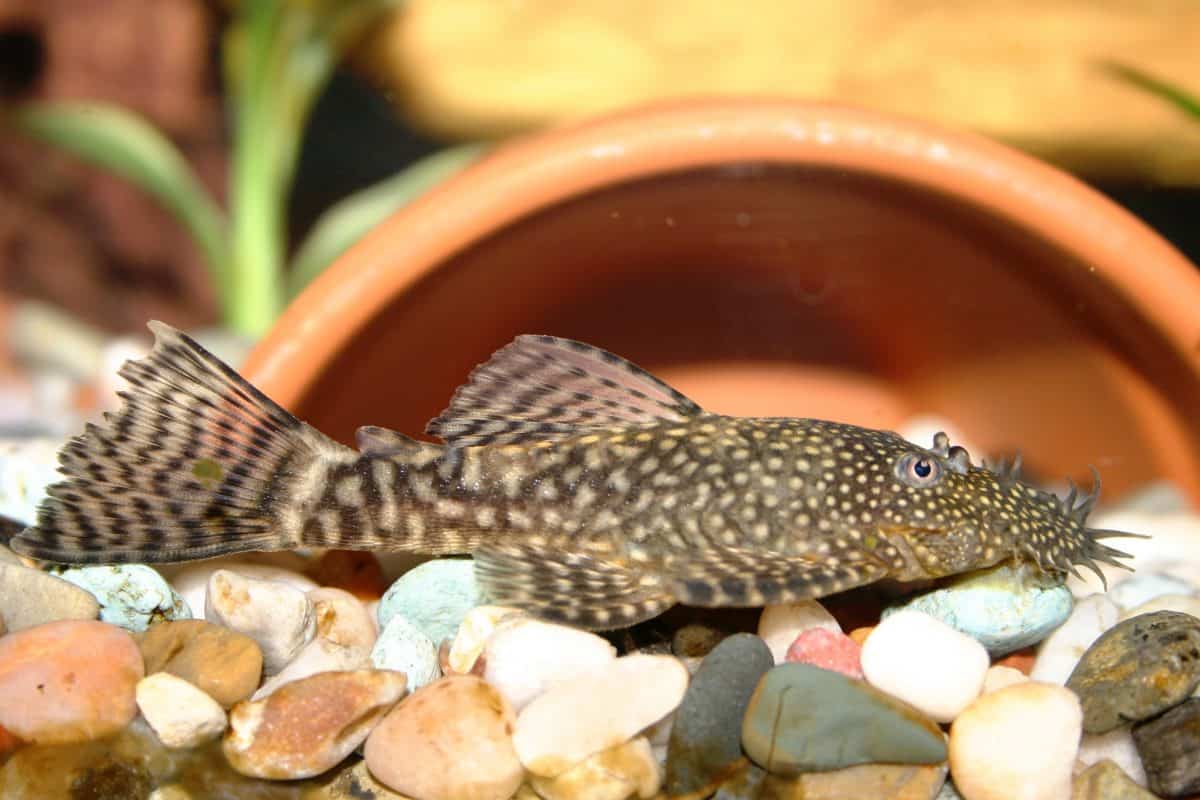
Apart from a large tank, they don’t have any special care requirements. Provided they are kept in a well-maintained environment they are quite resilient to disease.
It’s worth noting that some medications should be used with caution. These are scaleless fish and should never be treated with potassium permanganate or copper-based medications.
They are sensitive to both these medications, which can harm them. They can be treated with Melafix or Pimafix or a reduced dose of malachite green or formalin.
If you need or want to use such treatements for other fish that may be oin your tank, you will have to separate your pleco into another tank, or remove the sick fish into a hostpital tank for treatment.
What Other Fish Can Plecostomus Share a Tank With?
When they are juveniles, they can share their home with many other community fish, including cichlids and tetras.
Although it’s rare for a pleco to treat a tank mate as dinner, it’s advisable to follow the rule and keep fish that can’t fit in its mouth. As a pleco ages, it will outgrow both a tank and its tankmates.
Can You Keep Many Plecostomus Together?
When they are young they might get along. However, as they grow, plecos can become territorial and aggressive toward each other. It’s not a good idea to house more than one in the same tank.
The other consideration here is the size of the aquarium you would need, to keep more than one adult pleco. Two adults would require a tank holding 200+ gallons of water.
Buying Advice
Plecos are readily available to purchase online and at aquarium outlets. You can see a range of plecos, including the common pleco, here.
The common pleco can cost anywhere from five dollars up to about $30. Some species of pleco, such as the zebra pleco, can cost in excess of several hundred dollars.
Just as you would with any other aquarium fish, look for signs of Ich (white spots).
When you get your fish home, make sure it has plenty of hiding places while it gets used to its new surroundings.
Can You Breed Them?
Breeding plecostomus in an aquarium setting is generally unsuccessful. Even when bred for commercial purposes, breeders use fishery ponds, which are very big.
In the wild, they breed in burrows or caves on the riverbanks. The ponds used for spawning replicate this by having pits carved out of the muddy banks.
About 300 eggs are spawned by a compatible pair of fish, which are then protected by the male. Once the fry hatch, they remain guarded by the male, feeding off mucus secreted by the parents.
Interesting Facts and Trivia
Here are some interesting things you might not know about plecos:
- In some cases, they can live for as long as 20 or 30 years.
- Don’t put the fish in a plastic bag, it can spear and make holes in it.
- Air can be stored in the intestines, enabling the pleco to ride out poor conditions if they somehow end up outside of water.
Summarizing the Main Points
These peaceful fish are very good at keeping your aquarium free of algae and are relatively easy to care for. There is, however, a trade-off, which is the size of tank you need for this fast-growing fish.
As juveniles, they can be housed in a 50-gallon tank. When they grow to adult size, they need one of about 120 gallons. If you have two adults, then a 200-gallon+ tank would be needed.
Plecostomus are nocturnal fish so need plenty of hiding places during the day. They also like plants in the aquarium, but make sure they are hardy, as these fish will damage any delicate ones.
They will get along well with many other community species, but can be aggressive towards their own kind.
While plecos eat mainly algae growing in your tank, they do need their diet supplemented with algae pellets and green vegetables. Make sure you have some driftwood for them to feed on, this gives them fiber. The best time to feed them is when the lights go out.
Now you know what keeping a common pleco takes, all you need is to make sure you have enough room for it.
Do you have any plecostomus experiences to share with us or questions to ask? Please leave us a comment below!

